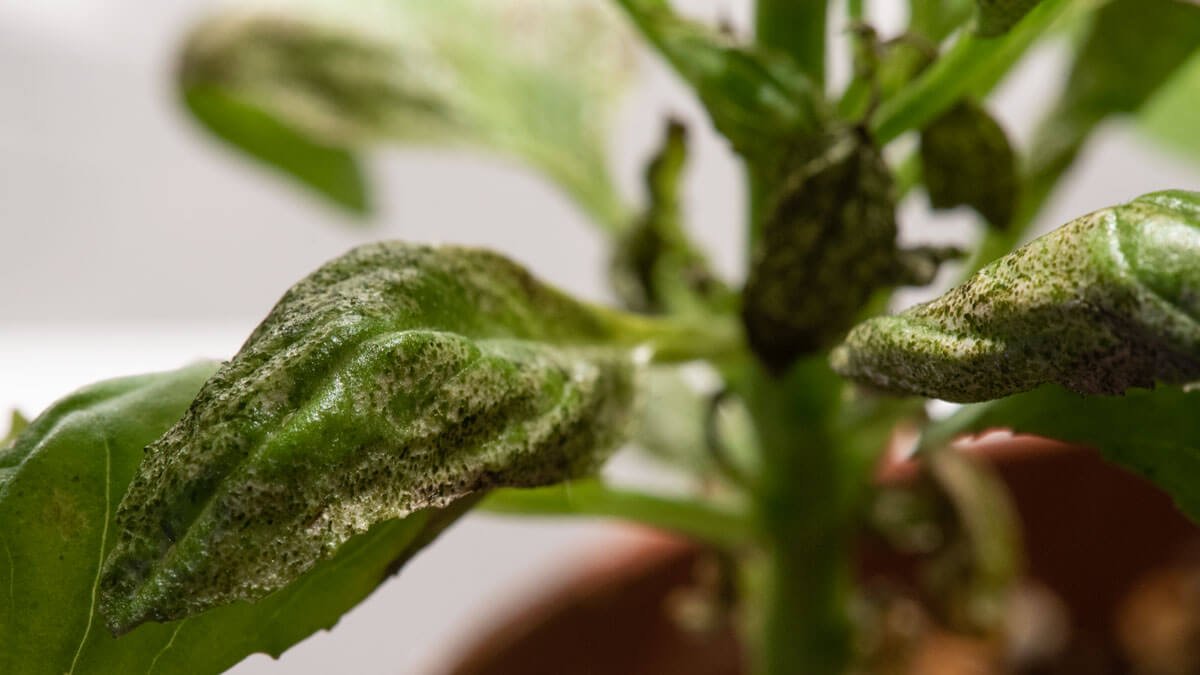Have you ever noticed those pesky dark spots marring the vibrant green of your beautiful basil leaves? You might toss those speckled leaves, wondering if they’re still safe to use. Well, it turns out that the answer isn’t always black and white.
The truth is, those black spots on basil might be harmless, but they can also sometimes indicate a problem. It depends entirely on the cause of the spots. It’s best to investigate further before adding these spotted leaves to your culinary creations.
Want to know what might be causing those spots, and when spotted basil is best left unused?
Are Basil Leaves with Black Spots Safe to Eat?

Yes, you can safely eat basil leaves with black spots on them.
Want to know why?
Well, because in most cases, the black spots appear due to environmental factors like,
- Cold weather
- Pest damage
- Harsh sun exposure
While basil leaves with black spots might not look appealing, there is no difference in the taste. They will have the same sweet, slightly spicy and pungent taste.
But it is always best to practice caution. Why? Because sometimes, consuming basil leaves with black spots can lead to health problems.
Here’s when you should throw them away,
Fungus of mold
If you notice the presence of mold or fungus along with black spots, don’t consume the leaves. It can cause gastrointestinal problems like diarrhoea and vomiting.
Eaten by bugs
Also, if the leaves are partly eaten by a bug, you should avoid consumption. They can contain pesticides and harmful bacteria. Make sure you use only the healthy leaves and throw away the affected ones.
Stems and flowers
You also need to avoid eating the stems and flowers of the basil plant. They might contain harmful substances that can make you sick or cause allergies. That’s why it’s best to use only the leaves when cooking.
What Causes Black Spots on Basil Leaves?

Black spots on basil leaves might worry you. But what makes these black spots appear on basil leaves? Here are some reasons,
Environmental factors
As we have discussed before, the black spots may appear due to environmental factors. If the weather is too cold or if there is too much exposure to sunlight, the leaves may develop tiny black spots.
Fungal infection
Fungal infection is the most common reason behind the appearance of black spots on basil leaves. The most usual ones include,
- Cercospora leaf spot
- Colletotrichum
- Septoria fungi
These infections lead to the development of black or brown spots on the leaves. In some cases, the leaves may also turn yellow and drop off.
Viral infection
Viral infections are another issue that can cause black spots on basil leaves. Two common viruses affecting basil plants are the,
- Tomato spotted wilt virus
- Cucumber mosaic virus
These viruses create black or brown spots on the leaves and can also cause other problems like wilting, yellowing, and stunted growth.
Pest problems
Pest problems can also cause black spots on basil leaves. Common pests that feed on leaves include,
- Thrips
- Aphids
They leave behind droppings that lead to black spots. Also, leaf miners can also cause these dark spots.
Bacterial infection
Bacterial infections are another behind this problem. One common bacterial infection in basil plants is caused by Pseudomonas cichorii. This infection can cause the formation of damp patches and a few brown spots on the leaves and stems.
Note:
It is important to understand what’s causing the black spots on basil leaves to decide if they’re safe to eat. If the spots are due to a fungus or bacteria, it’s better to throw away those leaves.
How to Prevent Black Spots on Basil Leaves?

If you are growing a basil plant, there are a few tips that can help you prevent the black spots from appearing on the leaves. Here are some things you can do,
Avoid overwatering
Water your plant regularly. But don’t overdo it as too much water can cause fungus to grow. Only add water at the base of the plant and make sure you don’t make the soil soggy.
Warm temperature
Basil likes warm temperatures but don’t expose it directly to harsh sunlight. Keep the temperature around 65 to 80°F.
Air Circulation
You also need to maintain proper air circulation to keep the plant healthy. Don’t cram multiple plants together and make sure the plant receives a gentle breeze.
Soil and drainage
For basil plants, you need soil that drains well and is full of compost and nutrients. Also, it is important to check the pH level of the soil.
These are some simple tips you can follow to keep your basil plant healthy and enjoy the leaves for cooking.



